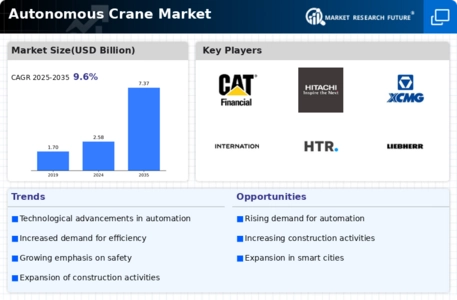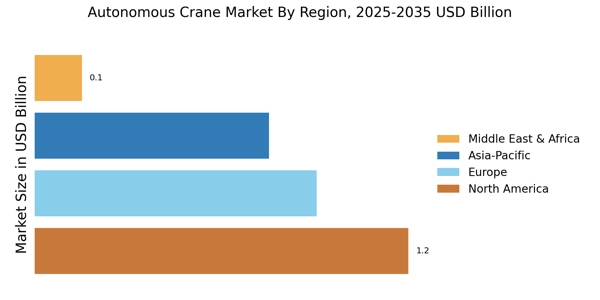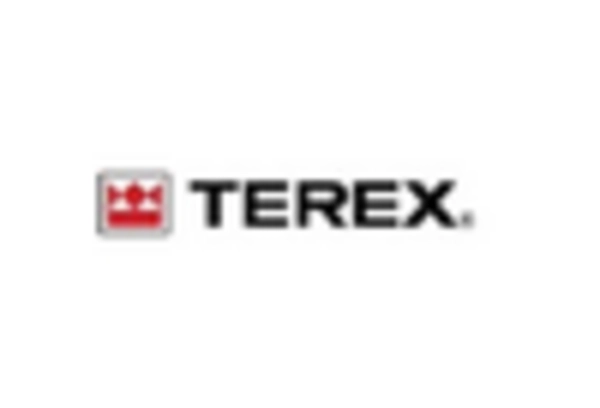Safety and Risk Mitigation
Safety concerns remain paramount in the Autonomous Crane Market, prompting a shift towards autonomous solutions. The integration of advanced sensors and AI technologies in autonomous cranes significantly reduces the risk of accidents and injuries on job sites. According to industry reports, the implementation of autonomous cranes can lead to a 30% reduction in workplace accidents. This focus on safety not only protects workers but also enhances operational efficiency. As companies prioritize risk mitigation, the demand for autonomous cranes is likely to increase, reinforcing their role as a critical component in safe material handling practices.
Increased Demand for Automation
The Autonomous Crane Market experiences a notable surge in demand for automation across various sectors, particularly in construction and logistics. As industries strive for enhanced efficiency and reduced labor costs, autonomous cranes emerge as a viable solution. The market is projected to grow at a compound annual growth rate (CAGR) of approximately 15% over the next five years, driven by the need for precision and safety in material handling. Companies are increasingly investing in autonomous technologies to streamline operations, reduce human error, and improve productivity. This trend indicates a shift towards more automated processes, positioning autonomous cranes as essential tools in modern industrial applications.
Regulatory Support and Standards
The Autonomous Crane Market benefits from evolving regulatory frameworks that support the adoption of autonomous technologies. Governments are increasingly recognizing the potential of automation to enhance productivity and safety in various sectors. New regulations and standards are being established to facilitate the integration of autonomous cranes into existing operations. This regulatory support is expected to drive market growth, as companies seek to comply with safety and operational standards. Furthermore, the establishment of clear guidelines for the use of autonomous cranes may encourage more businesses to invest in these technologies, thereby expanding the market.
Cost Efficiency and Operational Savings
Cost efficiency is a driving force in the Autonomous Crane Market, as businesses seek to optimize their operations. Autonomous cranes offer significant savings in labor costs and operational expenses. By automating material handling processes, companies can reduce the need for manual labor, leading to lower overhead costs. Reports indicate that businesses utilizing autonomous cranes can achieve up to 20% savings in operational costs. This financial incentive is compelling for many organizations, prompting them to adopt autonomous solutions as a means to enhance profitability and competitiveness in their respective markets.
Technological Innovations and Advancements
Technological innovations play a crucial role in shaping the Autonomous Crane Market. The continuous development of AI, machine learning, and robotics is enhancing the capabilities of autonomous cranes. These advancements enable cranes to perform complex tasks with greater precision and efficiency. The market is witnessing the introduction of features such as real-time monitoring, predictive maintenance, and advanced navigation systems. As these technologies evolve, they are likely to attract more investments and drive the adoption of autonomous cranes across various sectors. This trend suggests a promising future for the Autonomous Crane Market, characterized by ongoing innovation and enhanced functionality.


















Leave a Comment